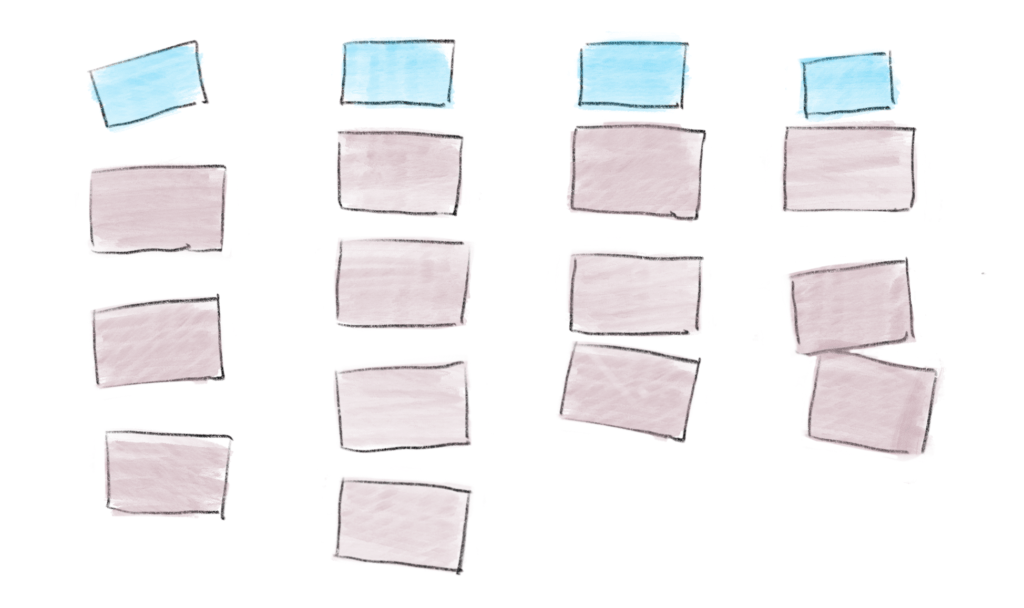The goal of this assignment is to brainstorm different topics and to explore new ideas. Be open. Take risks. Cast a really wide net. Remember to think about things that inspire you and why you are interested in them. One thing that is very important not to do at this early stage is to jump and commit to a “how/method” before really understanding the “why”. You want to make sure that you can commit to a topic that you feel very passionate about. Something that is truly fascinating to you (because it is going to be with you for the next 9 months). Try to think about your body of work thus far, things you have worked on, recurring themes in your projects, things that get you fired up, things that you care about, projects you are particularly proud of, or projects you wish you had been involved in, an article or book that you can’t stop thinking about, a problem you see in the world that needs attention AND that you have a personal connection to, something that exists that can be done better, something that you can show the world through your eyes… The possibilities are endless. Especially for those of you who are coming into Thesis with a specific technology in mind, this exercise is particularly important for you, because a technology void of a real application/need/narrative won’t lead to a well rounded thesis, so it is time to put the technology aside for a minute and look inwards…
STEP 1 – Things that inspire you
Get a bunch of different colored post-it notes and some pens. The next few steps should be done on real paper 🙂
Identify 15 projects, artworks, events, games, installations, performances, movements, objects, designs, current events, experiments, world problems, issues etc. that inspire you. These can (but don’t have to) relate to the thesis ideas that you have been considering. If you do not have an idea this will help you extract some new starter ideas. If you have started to think on a specific topic, this exercise might lead you towards some creative directions.
To begin, create 15 inspiration cards. Write all your inspirations on individual post its and put the inspiration cards together so you can see all of them at once. These inspiration cards cannot include technology such as “leap motion” or “brainwave reader”. If you feel stuck you can look online for interesting sources for inspiration such as: the Creators Project, Rhizome, Eyebeam, Sundance New Frontiers, Bitforms gallery, the Knight Foundation, Harvestworks, Techstars, Wired, Siggraph, Eyeo Festival, Nature, Pioneerworks, LACMA, Google Chrome Experiments, The Gates Foundation, NYFA, Creative Time, Creative Capital, Pitchfork, the Hemisphere Institute, Palais de Tokyo, Politico, The New Republic, the New York Times, the Atlantic, the Economist, the Cartier Foundation, Dexter Sinister, PS1, medium, Storefront for Art and Architecture, New Inc. at the New Museum, MoMA, and many many more!
STEP 2 – Digging deeper into your interests
The next step in the process would be to look at each inspiration card and ask yourself WHY? Why is this inspiring to me? Try and go through at least two, if possible three, levels of WHYs for each inspiration card. Do not list technology as interest (same criteria as above).
Document your Post-it/card sorting activity with pictures also post those to your Process Website.
STEP 3 – 5 Questions
Look back at all of your sources of inspiration. Select 5 inspiration/interest clusters (each with the three levels of interests) based on the ones that relate the most to you and that you feel like offer more fertile grounds.
Write 5 questions. One question for each of the 5 inspiration/interest groups. The question should be something that you legitimately want to investigate about that specific topic. You may need to go beyond three levels of interests and dig even deeper to get to a good question.
Write down your five initial questions and post them to your Process Website.

